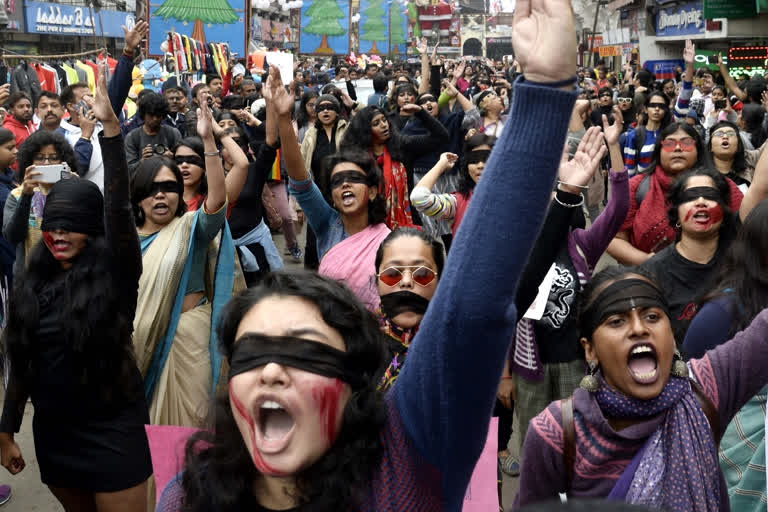Hyderabad: For the last few years now, media headlines of violent criminal acts do not find space in the National Crime Research Bureau’s (NCRB) report. The ideology of the party in power ends up deciding what should constitute the report and how much importance a particular category of crime should get.
Ideally, the nature of the crime that should have found prominent space in NCRB’s latest 2019 ‘Crime in India’ report, which documents criminality during 2018 should be on the hate crimes like lynching of people belonging to minority community allegedly linked to cow slaughter or beef trade. New generation messaging platforms like WhatsApp that are purveyors of hate news are behind some of these killings.
NCRB report is also quiet on the tension and violence that banning of cow slaughter has brought to the villages of north India. Stray cattle, which were earlier sent to slaughterhouses, now invade farms and households causing disquiet and violence. Fear of religious vigilante people and punitive laws prevent the villagers from taking any action against the unproductive animals, but it leads to serious contestation in these farmlands.
Ideally, confrontation amongst enraged villagers should have been put in the category of rural riots, but this was found inconvenient by the framers of this report. Till 2016, the NCRB had created a sub-category of “agrarian riots”, which had jumped by 327 per cent from 628 cases in 2014 to 2683 in 2015. After this bewildering bounce in the rioting in rural areas, which could be a combination of the collapse of rural employment guarantee scheme or land disputes, this category was done away with in subsequent NCRB reports.
Read: NCRB report, 2018: Cognizable crimes up by 1.35%
The usual explanation for the disappearance of any category is that the incidents weren’t in significant numbers and hence they did not merit special emphasis. With farm distress growing and farmers taking to agitation to force the administrators to take notice of their sorry plight, it is surprising how the report chose to jettison this category.
The agriculture sector is a sensitive area and governments have struggled to explain what drives the farmers to suicide. This phenomenon gained prominence after the country initiated economic reforms in 1991 and began to encourage cash crop cultivation. Heavily indebted farmers, who borrowed from village money lenders at exorbitant interest rates in anticipation of high returns, have been forced to commit suicide when the crop had got spoilt due to pesticide or failed due to poor monsoon or proper irrigation.
2018 figures show that the number of farm suicides has fallen. On the contrary, the suicides by unemployed youth have climbed up to 12,936 even if we compare it with the preceding year- 2017. This figure is unpalatable for most of the governments, but with reports of unemployment up to 42 years high, one shudders to think about how it will show up in the next NCRB report.
Another figure that governments and political parties fear are ones that pertain to the crime against women. In 2018, every 15 minutes a woman was raped in India and 94 per cent of the offenders were known to the victim. A total number of registered cases were 33,356 which is a gross underestimation.
